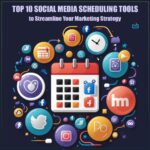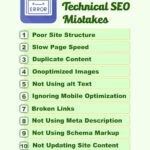In-depth Guide to Boost Your Website’s Ranking
In search engine optimization (SEO), staying updated with the latest white hat techniques is essential for ensuring your website’s success. With search engine algorithms becoming increasingly sophisticated, employing ethical and effective SEO strategies is important for achieving long-term visibility and growth. In this comprehensive guide, we’ll introduce you 30 proven white hat SEO techniques that can help you to optimize your website and improve its ranking on search engine results pages (SERPs).
1) Quality Content Creation
At the heart of every successful SEO strategy lies high-quality content. Creating valuable, relevant, and engaging content that addresses the needs and interests of your target audience is paramount. By offering informative articles, insightful guides, and compelling multimedia content, you can attract organic traffic and establish your website as a trusted authority in your niche.
2) Keyword Research
Effective keyword research lays the foundation for your SEO efforts. By identifying relevant keywords and phrases that align with your content and audience intent, you can optimize your website for targeted search queries. Utilize keyword research tools to uncover valuable insights into search volume, competition, and user intent, allowing you to tailor your content to meet the needs of your audience.

3) On-Page Optimization
Optimizing your website’s on-page elements is essential for improving its visibility and relevance to search engines. Incorporate targeted keywords into title tags, meta descriptions, headings, and content to signal to search engines what your pages are about. Additionally, optimize images with descriptive alt text and captions to enhance accessibility and indexing.
4) Mobile-Friendly Design
With the majority of internet users now accessing the web via mobile devices, ensuring your website is mobile-friendly is imperative. Adopt responsive design principles to ensure your site renders seamlessly across all devices and screen sizes. Mobile-friendly websites not only provide a better user experience but also receive a boost in search rankings from Google’s mobile-first indexing.
5) Page Speed Optimization
Page speed is a critical ranking factor that directly impacts user experience and search engine rankings. Optimize your website’s loading speed by minimizing server response times, compressing images, and leveraging browser caching. A faster website not only improves user satisfaction but also enhances crawlability and indexing by search engine bots.
6) HTTPS Implementation
Securing your website with HTTPS encryption is essential for protecting user data and establishing trust with visitors. HTTPS is also a ranking signal used by Google, with secure sites receiving a ranking boost over their non-secure counterparts. Migrate your website to HTTPS and obtain an SSL certificate to ensure a secure browsing experience for your users.
7) Internal Linking
Internal linking is an effective way to improve website navigation, distribute link equity, and enhance the crawlability of your site. Incorporate relevant internal links throughout your content to connect related pages and guide users to additional resources. By creating a logical hierarchy of internal links, you can improve user engagement and increase the visibility of important pages.
8) External Link Building
Earning high-quality backlinks from authoritative and relevant websites is a cornerstone of white hat SEO. Focus on building relationships with industry influencers, publishers, and bloggers to secure natural backlinks to your content. Guest blogging, content collaborations, and digital PR are effective strategies for acquiring valuable backlinks that enhance your website’s authority and trustworthiness.
9) Social Media Engagement
Social media platforms play a significant role in SEO by amplifying your content’s reach, fostering engagement, and attracting natural backlinks. Share your content across social channels, engage with your audience, and encourage social sharing to increase visibility and drive traffic to your website. Social signals such as likes, shares, and comments also contribute to your site’s authority and relevance in the eyes of search engines.
10) Schema Markup
Implementing structured data markup using schema.org vocabulary can provide search engines with valuable context about your content. By tagging elements such as product reviews, events, and recipes with structured data, you can enhance your website’s visibility in search results and qualify for rich snippets, knowledge panels, and other SERP features. Schema markup helps search engines understand the semantics of your content, improving its relevance and visibility to users.
11) Image Optimization
Optimizing images for search engines is essential for improving accessibility, user experience, and search engine indexing. Use descriptive filenames, alt text, and captions to provide context and improve the discoverability of your images. Compress images to reduce file size and improve page load times, while ensuring they maintain quality and clarity. By optimizing images, you can enhance the overall SEO performance of your website and attract organic traffic through image search results.
12) User Experience (UX) Optimization
Delivering a seamless and intuitive user experience is crucial for retaining visitors and encouraging engagement on your website. Focus on improving site navigation, reducing bounce rates, and increasing dwell time by providing valuable content and intuitive navigation. Optimize your website’s design, layout, and functionality to ensure a positive user experience across all devices and screen sizes.
13) Quality Backlink Profile
Building a high-quality backlink profile is essential for improving your website’s authority, relevance, and trustworthiness in the eyes of search engines. Focus on acquiring natural, editorially earned backlinks from reputable websites within your industry. Avoid black hat link building tactics such as buying links, link farms, and spammy guest blogging, as these can result in penalties and undermine your SEO efforts.
14) Long-Tail Keyword Targeting
Targeting long-tail keywords can be an effective strategy for attracting highly targeted traffic with less competition. Long-tail keywords are more specific and less competitive than broad keywords, making them easier to rank for and attracting users with a higher purchase intent. Conduct keyword research to identify long-tail variations of your primary keywords and incorporate them into your content to capture niche audiences and improve your chances of ranking in SERPs.
15) Content Freshness
Regularly updating and refreshing your content is essential for maintaining relevance, attracting traffic, and signaling to search engines that your website is active and authoritative. Monitor industry trends, news, and updates, and update your existing content to reflect the latest information and developments. Additionally, publish new content on a regular basis to provide value to your audience and keep them coming back for more.
16) URL Structure Optimization
Creating SEO-friendly URLs that are descriptive, concise, and keyword-rich can improve crawlability, user experience, and search engine visibility. Structure your URLs to reflect the hierarchy and organization of your website’s content, incorporating relevant keywords and avoiding unnecessary parameters and symbols. Clean, readable URLs make it easier for users and search engines to understand the content of your pages and navigate your website effectively.
17) Canonicalization
Implementing canonical tags is essential for resolving duplicate content issues and consolidating link equity to preferred URLs. Canonical tags indicate to search engines the preferred version of a page among multiple duplicates, preventing duplicate content penalties and ensuring proper indexing and ranking of your content. Use canonical tags to point search engines to the original, canonical version of your content and avoid diluting your site’s authority with duplicate or similar pages.
18) User-Generated Content (UGC)
Encouraging user-generated content such as reviews, comments, and testimonials can enhance engagement, credibility, and SEO performance. User-generated content provides valuable social proof, enriches your website with diverse perspectives, and fosters a sense of community among your audience. Encourage users to share their experiences, opinions, and feedback, and moderate user-generated content to ensure quality and relevance.
19) Voice Search Optimization
Optimizing your content for voice search queries is essential for adapting to changing search trends and meeting the needs of voice-enabled devices such as smart speakers and virtual assistants. Voice search optimization involves targeting natural language queries, optimizing for featured snippets, and providing concise, informative answers to common questions. Focus on conversational keywords, question-based queries, and long-tail phrases to optimize your content for voice search and improve its visibility in voice search results.
20) Local SEO Optimization
Optimizing your website for local search is crucial for attracting customers in your geographic area and driving foot traffic to your physical location. Claim and optimize your Google My Business listing, acquire local citations, and target location-specific keywords to improve your visibility in local search results. Additionally, optimize your website’s content, meta tags, and schema markup for local relevance, and encourage positive reviews and ratings from satisfied customers to enhance your local SEO performance.
21) SEO-Friendly URLs
Creating SEO-friendly URLs that are descriptive, readable, and keyword-rich can improve crawlability, user experience, and search engine visibility. Structure your URLs to reflect the hierarchy and organization of your website’s content, incorporating relevant keywords and avoiding unnecessary parameters and symbols. Clean, readable URLs make it easier for users and search engines to understand the content of your pages and navigate your website effectively.
22) Video Optimization
Optimizing your video content with descriptive titles, tags, and descriptions can improve its visibility, engagement, and search engine ranking. Host videos on platforms like YouTube to leverage their massive audience and SEO benefits, and optimize video metadata to provide context and relevance to search engines. Incorporate keywords, transcripts, and closed captions into your videos to improve accessibility, indexing, and search visibility, and encourage engagement and sharing among viewers.
23) Brand Building
Establishing and promoting your brand across digital channels is essential for building trust, credibility, and authority with your audience and search engines. Consistently deliver valuable content, engage with your audience, and maintain a cohesive brand identity across your website, social media, and other online platforms. By building a strong brand presence, you can attract organic traffic, earn natural backlinks, and enhance your website’s visibility and reputation in search results.
24) Content Promotion
Actively promoting your content through email marketing, social media advertising, influencer outreach, and content syndication can increase its reach, engagement, and visibility. Identify relevant channels, platforms, and communities where your target audience congregates, and share your content strategically to maximize its exposure and impact. Leverage the power of social media, email newsletters, and partnerships to amplify your content’s reach and attract organic traffic and backlinks.
25) Reputation Management
Monitoring and managing your online reputation is essential for building trust, credibility, and authority with your audience and search engines. Respond to reviews, address customer feedback, and engage with your audience in a transparent and authentic manner to demonstrate your commitment to customer satisfaction and quality. By actively managing your online reputation, you can mitigate negative feedback, foster positive relationships, and enhance your website’s credibility and trustworthiness in search results.
26) E-A-T Optimization
Enhancing expertise, authority, and trustworthiness (E-A-T) signals is essential for establishing credibility and relevance with users and search engines. Showcase your expertise, credentials, and industry affiliations prominently on your website to demonstrate your authority and credibility within your niche. Additionally, solicit reviews, testimonials, and endorsements from satisfied customers and industry experts to reinforce your trustworthiness and credibility with your audience and search engines.
27) Site Architecture Optimization
Optimizing your website’s architecture and navigation is crucial for improving crawlability, indexing, and user experience. Create a logical site structure with clear navigation paths, internal linking, and breadcrumb navigation to guide users and search engines through your content effectively. Organize your content into categories, subcategories, and silos to facilitate discovery and navigation, and ensure that every page is easily accessible and interconnected within your website’s hierarchy.
28) Content Syndication
Syndicating your content across relevant platforms, channels, and publications can increase its visibility, reach, and engagement. Identify reputable websites, blogs, and publications within your industry and offer to contribute guest posts, articles, or interviews to their platforms. By sharing your expertise and insights with a wider audience, you can attract new visitors, earn natural backlinks, and enhance your website’s authority and relevance in search results.
29) Long-Form Content Creation
Creating in-depth, broad content that addresses complex topics and provides valuable insights can attract organic traffic, earn backlinks, and establish your website as a trusted authority in your niche. Invest in long-form content such as ultimate guides, case studies, and research reports that offer detailed analysis, actionable advice, and unique perspectives. By providing comprehensive resources that meet the needs of your audience, you can increase engagement, dwell time, and search visibility, leading to improved rankings and traffic.
30) Continuous Monitoring and Optimization
Regularly monitoring your website’s performance, analyzing key metrics, and iterating on your SEO strategies is essential for staying ahead of the competition and adapting to changing search trends. Utilize web analytics tools to track organic traffic, keyword rankings, and user engagement metrics, and identify areas for improvement and optimization. Experiment with different strategies, tactics, and approaches to find what works best for your website and audience, and continually refine your SEO efforts to achieve sustainable, long-term success.
Summary
Learning white hat SEO techniques is essential for optimizing your website, improving its ranking on search engine results pages, and driving organic traffic and conversions. By implementing ethical, effective, and sustainable SEO strategies, you can enhance your website’s visibility, authority, and trustworthiness, and establish a strong foundation for long-term success in the competitive digital world. Whether you’re a seasoned SEO professional or a beginner looking to boost your website’s performance, incorporating these 30 white hat SEO techniques into your strategy can help you achieve your goals and drive meaningful results for your business or brand.




